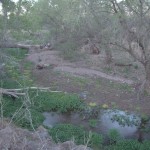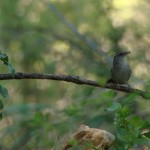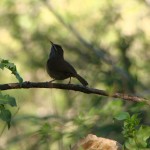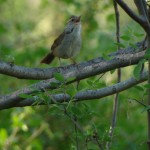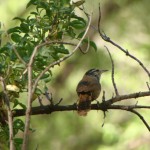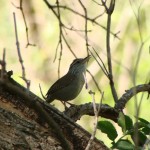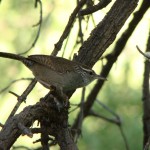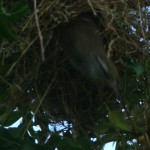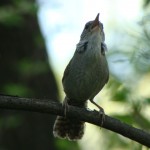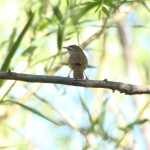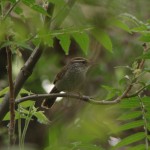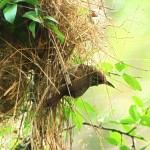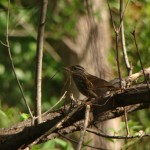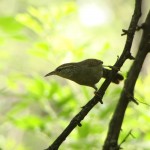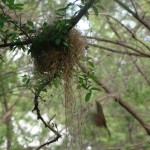On August 25, 2008, Robin Baxter and I were scouting in The Nature Conservancy’s Patagonia-Sonoita Creek Preserve prior to a Birds & Blooms Magazine field-trip we were leading there the next day. As we entered the Creek Trail from the Visitor’s Center, I heard a loud, bubbling, musical song that was unlike anything either of us had ever heard in years of birding along Sonoita Creek, but I excitedly recognized as a Sinaloa Wren from having done a Christmas Bird Count trip with several friends to San Blas, Nayarit in Mexico. During that trip, I was able to learn and differentiate between the songs and calls of Sinaloa and Happy Wrens, but that had been years before. We were extremely hopeful, but really wanted to see what was making that song.
It took a while to find the actual bird (in order to make sure we weren’t hearing an imitation from some other species), but once I found it and confirmed it was, in fact, an eye-striped wren making the vocalizations, I realized we were in the presence of a bird which had never been documented or confirmed in the United States. Hurriedly fumbling with my Panasonic point-and-shoot camera, I was able to take this poor photograph:
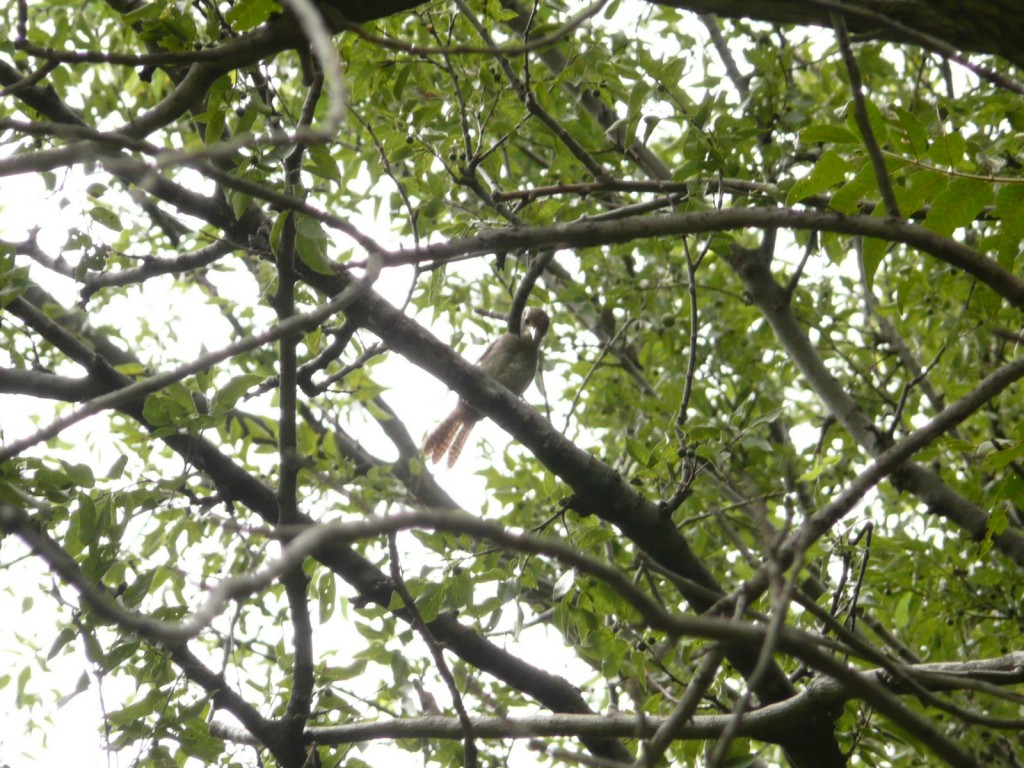
We followed the bird upstream for a half-mile or so, being led by its ebullient song (which Robin was able to get reproductions of on a hand-held voice recorder), when an approaching ‘Chubasco’ surrounded us with dark, forbidding clouds and close, loud thunder. Leaving the bird in order to seek shelter and begin spreading the news of our find to the birding community, we were both in a state of excitement and disbelief, hoping this was not some cruel hallucination. After making some phone calls and returning later in the day, we tried unsuccessfully to re-find the bird. We did, however, run into a group of tour leaders from Wings Birding Tours Company who were on a retreat at the nearby Circle-Z Ranch and had heard about our discovery. After playing Robin’s recording for them, Dave Stejskal declared, “That’s a Sinaloa Wren, all right!” But where was it now?
Try as we might, the bird could not be re-located for three days when, on a morning walk along Blue Have Road (the 3-mile dirt road that begins by the Paton’s yard on the edge of town and parallels Sonoita Creek past The Nature Conservancy Preserve entrance), I once again heard the wonderful, liquid song coming from trees along the side of the road a quarter-mile past the Paton’s. I was ecstatic to find the wren foraging about 15′ above the edge of the road (something it only very rarely did later). Immediately heading home to call the Rare Bird Alert, this day marked the beginning of a 15-month-long stay during which ‘The Wren’ established a static, 10-acre territory on which he built two nests in the summer of 2009.
Singing loudly from March into October, the wren was usually easy to track, but cryptic plumage, skulking habits, and TNC’s understandable rules against visitors entering The Preserve from the roadside conspired to make it a very difficult bird to see well. In the winter, only a grating, ratchet-like call would be given during the first couple of hours of daylight, making it even more frustrating to see. For these reasons, many birders had to search for days at a time, or make numerous pilgrimages to Patagonia in order to make a ‘countable’ sighting. The benefit to Patagonia’s economy must have been significant, and a row of cars parked along Blue Haven Road became an everyday sight for well over a year.
With permission from The Nature Conservancy, Robin and I were able to study the wren’s nest-building and foraging behavior at close range as we took photos and videos and recorded data about its day-to-day activities. The data were written up and submitted to North American Birds, and were published in the December 2008-February 2009 issue (vol. 63: no. 2, pp. 196-201). The following shots were taken near the first nest during the summer of 2009:
